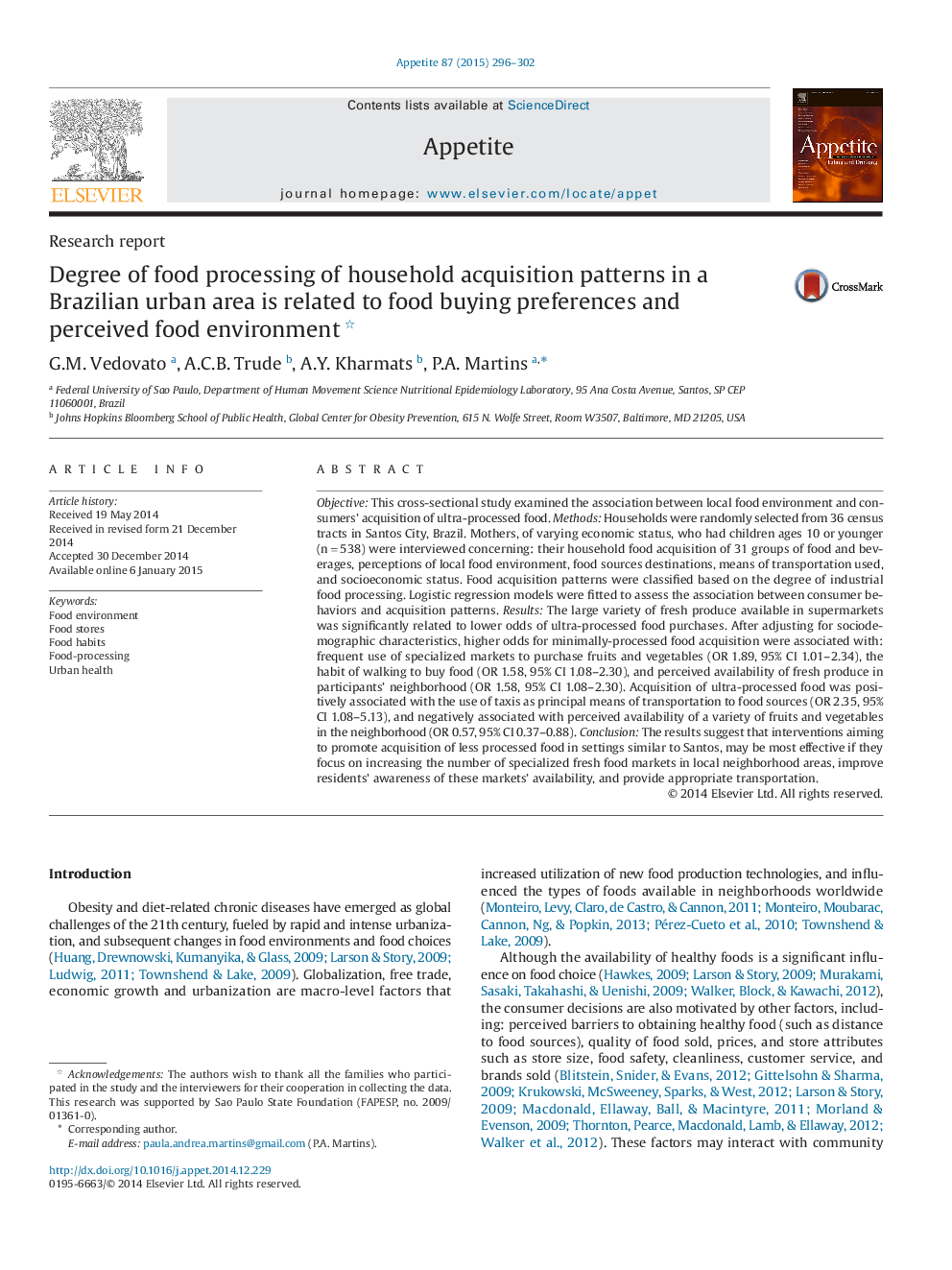| کد مقاله | کد نشریه | سال انتشار | مقاله انگلیسی | نسخه تمام متن |
|---|---|---|---|---|
| 7309473 | 1475393 | 2015 | 7 صفحه PDF | دانلود رایگان |
عنوان انگلیسی مقاله ISI
Degree of food processing of household acquisition patterns in a Brazilian urban area is related to food buying preferences and perceived food environment
ترجمه فارسی عنوان
درجه فرآوری مواد غذایی از الگوهای خرید خانه در یک منطقه شهری برزیلی مربوط به تنظیمات خرید غذا و محیط غذای درک شده است
دانلود مقاله + سفارش ترجمه
دانلود مقاله ISI انگلیسی
رایگان برای ایرانیان
کلمات کلیدی
محیط غذا، فروشگاه های مواد غذایی، عادات غذایی، فرآوری مواد غذایی، بهداشت شهری،
موضوعات مرتبط
علوم زیستی و بیوفناوری
علوم کشاورزی و بیولوژیک
دانش تغذیه
چکیده انگلیسی
Objective: This cross-sectional study examined the association between local food environment and consumers' acquisition of ultra-processed food. Methods: Households were randomly selected from 36 census tracts in Santos City, Brazil. Mothers, of varying economic status, who had children ages 10 or younger (nâ=â538) were interviewed concerning: their household food acquisition of 31 groups of food and beverages, perceptions of local food environment, food sources destinations, means of transportation used, and socioeconomic status. Food acquisition patterns were classified based on the degree of industrial food processing. Logistic regression models were fitted to assess the association between consumer behaviors and acquisition patterns. Results: The large variety of fresh produce available in supermarkets was significantly related to lower odds of ultra-processed food purchases. After adjusting for sociodemographic characteristics, higher odds for minimally-processed food acquisition were associated with: frequent use of specialized markets to purchase fruits and vegetables (OR 1.89, 95% CI 1.01-2.34), the habit of walking to buy food (OR 1.58, 95% CI 1.08-2.30), and perceived availability of fresh produce in participants' neighborhood (OR 1.58, 95% CI 1.08-2.30). Acquisition of ultra-processed food was positively associated with the use of taxis as principal means of transportation to food sources (OR 2.35, 95% CI 1.08-5.13), and negatively associated with perceived availability of a variety of fruits and vegetables in the neighborhood (OR 0.57, 95% CI 0.37-0.88). Conclusion: The results suggest that interventions aiming to promote acquisition of less processed food in settings similar to Santos, may be most effective if they focus on increasing the number of specialized fresh food markets in local neighborhood areas, improve residents' awareness of these markets' availability, and provide appropriate transportation.
ناشر
Database: Elsevier - ScienceDirect (ساینس دایرکت)
Journal: Appetite - Volume 87, 1 April 2015, Pages 296-302
Journal: Appetite - Volume 87, 1 April 2015, Pages 296-302
نویسندگان
G.M. Vedovato, A.C.B. Trude, A.Y. Kharmats, P.A. Martins,
